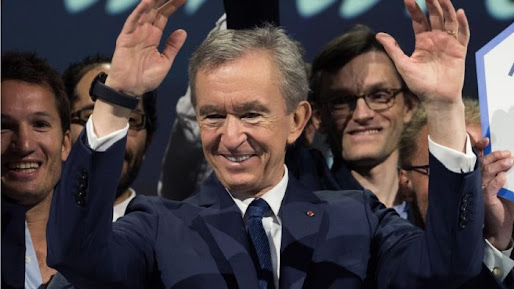Islamic cinema is booming. Can it break into Western markets?
BIBLICAL epics are all the rage. “Noah” and “Exodus: Gods and Kings” burst onto screens in 2014. “The Young Messiah”, “Risen” and “Last Days in the Desert” (2016) explored the chronological gaps in the Gospels. Christ’s ministry takes centre-stage in the blockbuster remake of Ben Hur (2016). Yet Hollywood directors are not alone in cashing in on all things religious. Islamic films and television series have also experienced huge growth in recent years. “Kingdom of Solomon” (2010) proved a big hit in Iran. “Shajarat al-Duur” (2013) highlighted the first Muslim queen of Egypt, while “Harat al-Sheikh” and “Imam Ahmed ibn Hanbal” (2016) both covered the early years of Islamic history. But who makes these films, and will they ever appeal to secular Western audiences?
Islamic cinema certainly has the spending power. “He Who Said No” (2015), an Iranian film about the Battle of Karbala (a Sunni-Shia clash in 680AD) had a rumoured budget of $70m. Tariq Anwar, an Oscar winner, was enlisted to help edit the film. In 2012, Qatar and Saudi Arabia pumped 200m Saudi riyals ($53m) into “Omar”, a blockbuster television series about Omar Ibn al-Khattab, the second Islamic caliph. “Muhammad: The Messenger of God” (2015), also made in Iran, had a budget of $40m.
But as extravagant as these films are, their creators have emphasised an aim beyond entertainment or profit. Majid Majidi, director of “Muhammad: The Messenger of God” felt the film should promote “Islamic culture”. The makers of “Omar” claimed that they were not even trying to make a profit. “The dramatic work is not regarded from the profit or loss perspectives,” said one of the executives involved in the project.
Statements like this are revealing. These films might make money, and they might entertain. But ultimately—and unsurprisingly—they are meant to proselytise. The Middle East is burning with a brutal Sunni-Shia conflict, fuelled by Saudi Arabia and Iran respectively. It was inevitable that cinema would be heaved into this battle too. Iranian clerics supported “He Who Said No”; “Omar” was funded by Sunni sheikhs in the Gulf States.
Sectarianism limits the opportunities for Islamic cinema even within the Muslim world. “Omar” was popular in Sunni-majority countries. But Shias consider Ibn al-Khattab a traitor who usurped Ali, the true heir to Muhammad. “Omar” was broadcast in Shia-dominated Iran, but only on a small Sunni television station. Meanwhile, “Muhammad: The Messenger of God” was praised by the Iranian media, but condemned by Sunni clerics for presenting the prophet in an “untrue light”. “He Who Said No” faced similar problems. For Shias, the Battle of Karbala marks the martyrdom of their leader, Hussein, by an army of Sunnis. Predictably, the film was not popular in Riyadh.
Given the problems these films face in the Middle East, what chance do they have with a wider, non-Muslim, audience? Their theology might alienate viewers; most Islamic movies make frequent references to characters and events unfamiliar to the typical viewer in London or New York. Given the current political climate, could stories about Muhammad and his followers be popular in Europe and America? In a 2016 poll, 46% of Americans expressed an unfavourable view of Muslims. The march of nationalist politics, on both sides of the Atlantic, is unlikely to help. Muslims are only a small proportion of Western populations: only 1% in America. Even if the films were screened, it is unlikely that they could find large audiences in Western countries.
Another problem is the restrictions placed on Islamic film-makers by their own countries. Muslims consider showing any of their early leaders on film unacceptable; arguing that it promotes a worship of these characters as gods in their own right, when in fact they are merely God’s servants. This makes crafting films about them rather hard. Indeed, Iranian clerics demanded alterations to “He Who Said No” before it was released: the faces of some of the protagonists had to be obscured.
It therefore remains unlikely that Islamic films will ever break into Western markets, despite their hefty budgets. This is a pity. Too many Hollywood movies use the Middle East as a lazy prop, without trying to understand the region or its people. Not that all is lost; several secular Middle Eastern films have made it big abroad, and enjoyed screenings across the West. “Wadjda” (2012) is a Saudi work charting a young girl’s struggle for a new bicycle. It opened to rave reviews in Europe and was nominated for an Oscar. Another film named “Omar”—this time a 2013 thriller set in Palestine—was also a hit.
Middle Eastern films can succeed overseas, so long as they curb their religious enthusiasm. “Bilal”, a film set for release later this year, has taken note. It will cover the life of Bilal Ibn Rabeh, an Ethiopian slave boy who ended up a companion of the Prophet Muhammad. Ayman Jamal, the director, is eager to promote the story’s universal message. Bilal is “a simple story about a 7-year-old boy who has faced injustice and tyranny”, Mr Jamal says, and references to Islam are noticeably absent. Given current attitudes towards Islam, this sort of reticence and universality is perhaps the only way that Islamic films can break into Western markets. Films that are loud and proud about their religious content will fill seats only in the Middle East.



Comments
Post a Comment